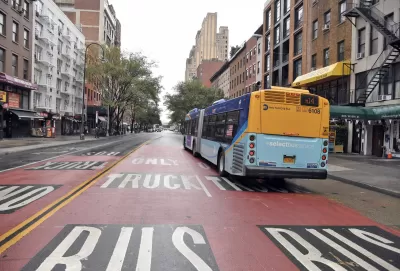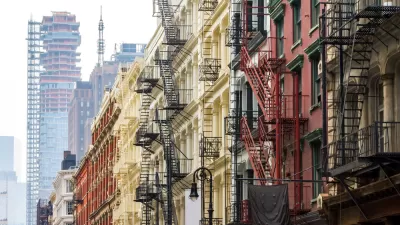The former mayor's administration oversaw several major changes in the city's skyline, streets, and public spaces.

An article by Rachel Holliday Smith describes the changes that have happened to New York City's built environment and skyline during former Mayor Bill de Blasio's administration, which include rezoning, bus lanes, and more supertall buildings.
Some of the changes that impacted the city the most, writes Holliday Smith, are the adoption of outdoor dining and living spaces during the pandemic, programs which the city wants to make permanent. The city also invested heavily in the renovation of city parks in underserved communities and expanded bus and bike lanes.
The article also points to the East Side Coastal Resiliency Project which, while controversial, aims to protect a densely populated neighborhood from flooding and rising sea levels. Another major change: the city's shift of a third of its public housing units to private management using the federal Rental Assistance Demonstration program, which is designed to help cities improve conditions in affordable housing units. Meanwhile, the NYCHA hopes to receive at least $35 billion in assistance funds from the Build Back Better plan in order to meet its $40 billion backlog.
In the past eight years, nine neighborhoods have been rezoned to allow for more density, but critics point out that early efforts focused primarily on low-income neighborhoods, while the results of these rezoning efforts will take years to manifest.
FULL STORY: Skylines and Streetscapes: How New York City Physically Changed in de Blasio Era

Alabama: Trump Terminates Settlements for Black Communities Harmed By Raw Sewage
Trump deemed the landmark civil rights agreement “illegal DEI and environmental justice policy.”

Planetizen Federal Action Tracker
A weekly monitor of how Trump’s orders and actions are impacting planners and planning in America.

Why Should We Subsidize Public Transportation?
Many public transit agencies face financial stress due to rising costs, declining fare revenue, and declining subsidies. Transit advocates must provide a strong business case for increasing public transit funding.

Understanding Road Diets
An explainer from Momentum highlights the advantages of reducing vehicle lanes in favor of more bike, transit, and pedestrian infrastructure.

New California Law Regulates Warehouse Pollution
A new law tightens building and emissions regulations for large distribution warehouses to mitigate air pollution and traffic in surrounding communities.

Phoenix Announces Opening Date for Light Rail Extension
The South Central extension will connect South Phoenix to downtown and other major hubs starting on June 7.
Urban Design for Planners 1: Software Tools
This six-course series explores essential urban design concepts using open source software and equips planners with the tools they need to participate fully in the urban design process.
Planning for Universal Design
Learn the tools for implementing Universal Design in planning regulations.
Caltrans
Smith Gee Studio
Institute for Housing and Urban Development Studies (IHS)
City of Grandview
Harvard GSD Executive Education
Toledo-Lucas County Plan Commissions
Salt Lake City
NYU Wagner Graduate School of Public Service




























